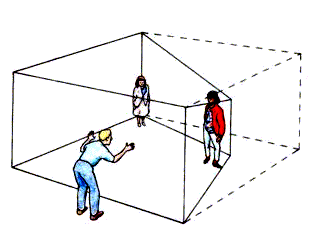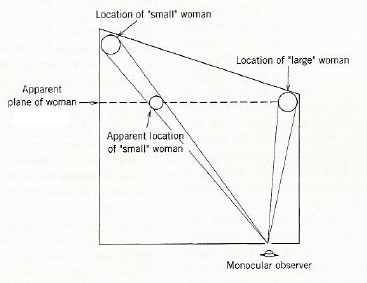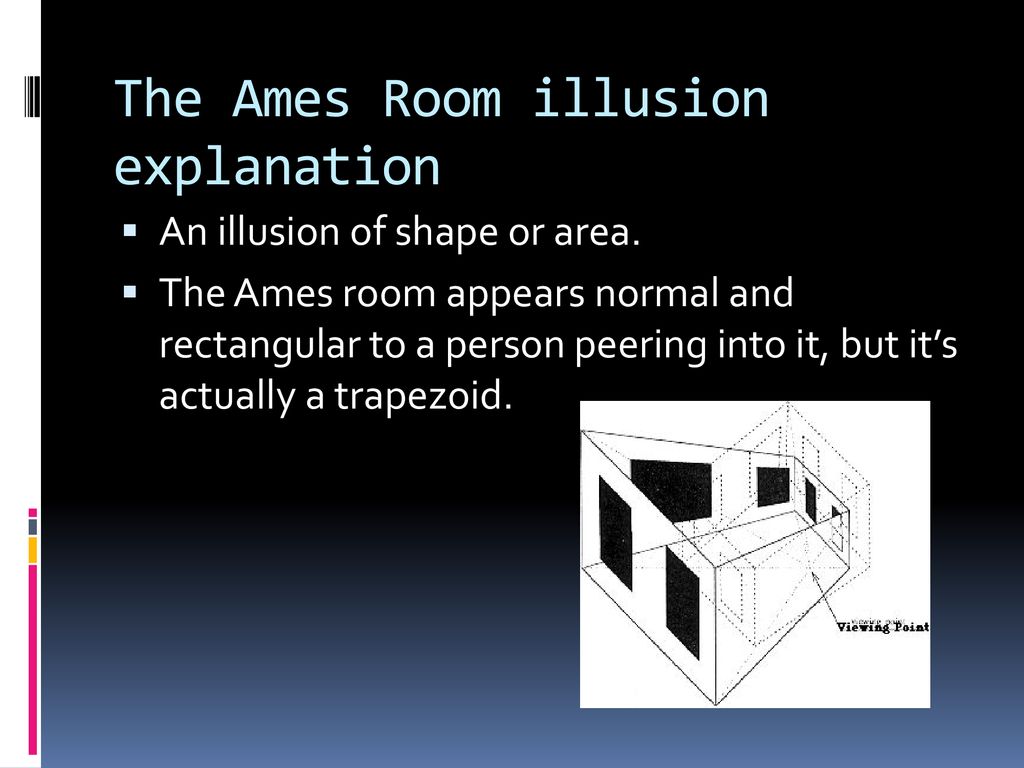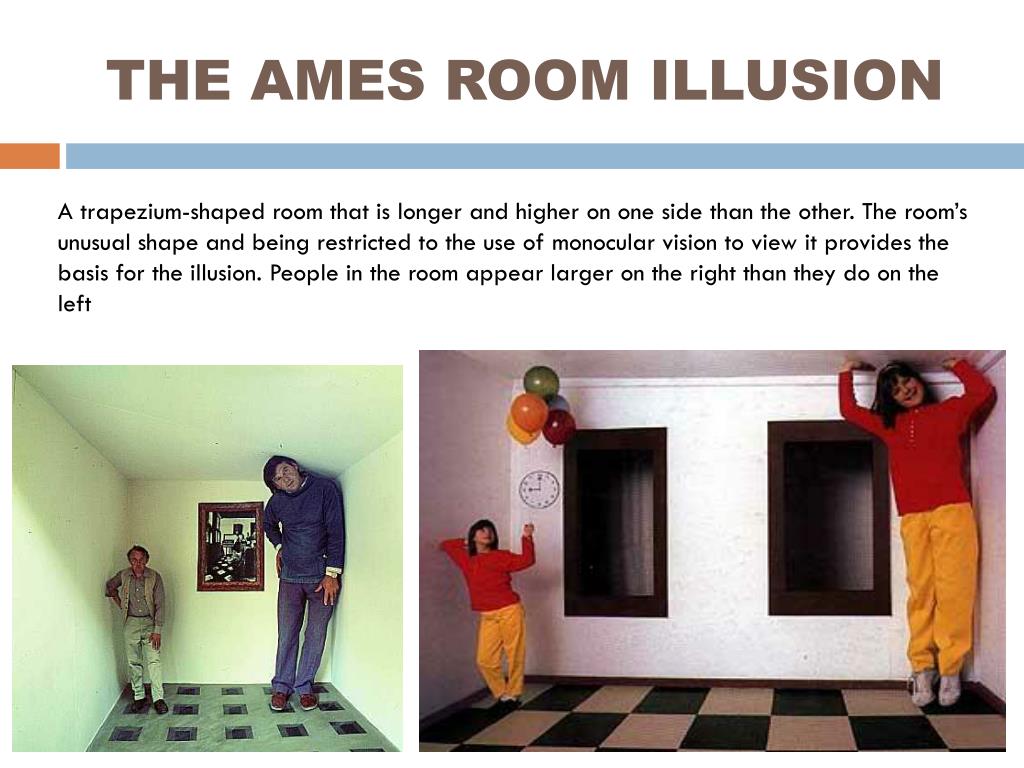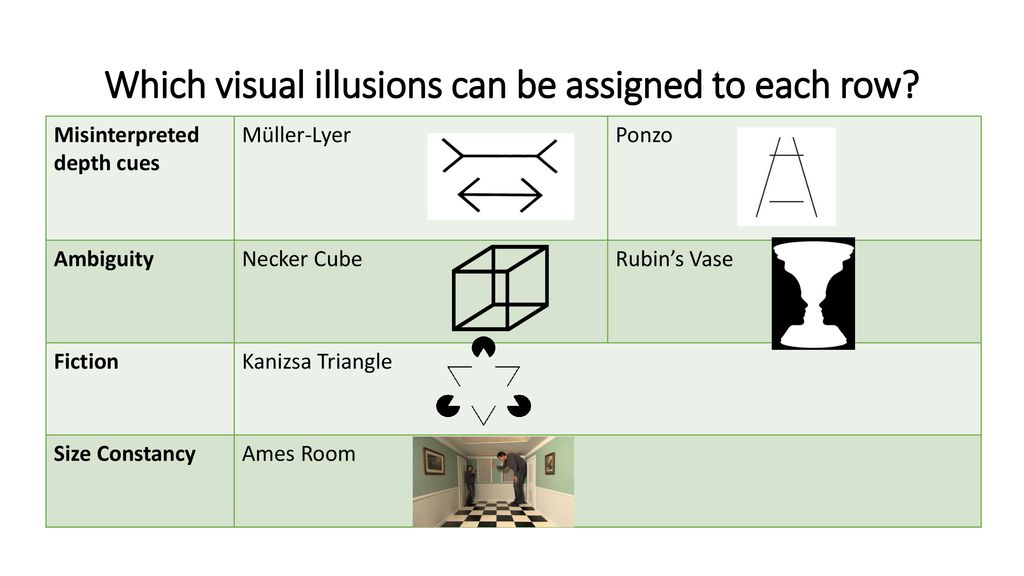An ames room is a distorted room that creates an optical illusion likely influenced by the writings of hermann helmholtz citation needed it was invented by american scientist adelbert ames jr.
Ames room illusion explanation.
In reality both people are of approximately the same height and size.
However experts do not always agree on exactly what causes optical illusions as is the case with the muller lyer illusion.
Optical illusions can be fun and interesting but they also serve as an important tool for researchers.
How does the ames room illusion work.
In the room the individual on the left appears to be very tall while the person on the right looks very small.
Upon viewing people or objects within an ames room there is a loss of normal perspective.
The ames room illusion is due to the structure of ames room.
An ames room is viewed with one eye through a peephole through the peephole the room appears to be an ordinary rectangular cuboid with a back wall.
A wonderful prezi created by erika and alex what is the ames room illusion.
In 1946 and constructed in the following year.
By looking at how we perceive these illusions we can learn more about how the brain and perceptual process work.
The effect works by utilizing a distorted room to create the illusion of a dramatic disparity in size.
He based his design on a concept originally conceived by hermann helmholtz in the late 19th century.
Here is a video demonstration of what the ames room illusion is.
Introduction the ames room illusion is supposedly caused by the distorted room seen in the picture below which is named after the american ophthalmologist adelbert ames jr who first constructed such a room in 1935.
Watch the video above for a full explanation.
This entry was posted in cognitive psychology fun facts and optical illusions and tagged ames room ames room illusion attention perception philip zimbardo visual illusion on april 13 2012 by wip.
An ames room is a distorted room used to create an optical illusion of relative sizes.
How does the ames room illusion work.
In this illusion an object standing at one end of the room looks like a.
Named for its creator american ophthalmologist adelbert ames jr the first ames room was built in 1946 based on the late nineteenth century concept of german scientist hermann von helmholtz.


